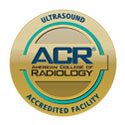
InterVasc is currently closed.
Peripheral Arterial Disease (PAD)
Peripheral arterial disease, or PAD, is a condition in which the arteries that carry the blood to the arms or legs become narrowed or clogged, interfering with the normal flow of blood. The most common cause of PAD is atherosclerosis (often called hardening of the arteries). Atherosclerosis is a gradual process in which cholesterol and scar tissue build, forming a substance called plaque that clogs the blood vessels. PAD may also be caused by blood clots.
The disease, which affects both men and women, often goes undiagnosed and many people mistakenly think the symptoms are a normal part of aging. The most common symptom of PAD is called intermittent claudication, a painful cramping in the leg or hip, particularly when walking. Intermittent claudication occurs when there is not enough blood flowing to the leg muscles during exercise. The pain typically goes away when the muscles are given a rest.
Other symptoms may include numbness, tingling or weakness in the leg. In severe cases, you may experience a burning or aching pain in the feet or toes while resting, or develop a sore on the leg or foot that does not heal. People with PAD may also experience a cooling or color change in the skin of the legs or feet, or loss of hair on the legs. In extreme cases, untreated PAD can lead to gangrene, a serious condition that may require amputation of a leg or a foot.



